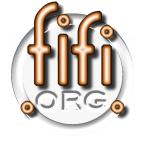GNU Info
 (python2.1-lib.info)Front Matter
(python2.1-lib.info)Front Matter
Front Matter
************
Copyright (C) 2001-2002 Python Software Foundation. All rights
reserved.
Copyright (C) 2000 BeOpen.com. All rights reserved.
Copyright (C) 1995-2000 Corporation for National Research Initiatives.
All rights reserved.
Copyright (C) 1991-1995 Stichting Mathematisch Centrum. All rights
reserved.
See the end of this document for complete license and permissions
information.
Python is an extensible, interpreted, object-oriented programming
language. It supports a wide range of applications, from simple
text processing scripts to interactive WWW browsers.
While the describes the exact syntax and semantics of the
language, it does not describe the standard library that is
distributed with the language, and which greatly enhances its
immediate usability. This library contains built-in modules
(written in C) that provide access to system functionality such as
file I/O that would otherwise be inaccessible to Python
programmers, as well as modules written in Python that provide
standardized solutions for many problems that occur in everyday
programming. Some of these modules are explicitly designed to
encourage and enhance the portability of Python programs.
This library reference manual documents Python's standard library,
as well as many optional library modules (which may or may not be
available, depending on whether the underlying platform supports
them and on the configuration choices made at compile time). It
also documents the standard types of the language and its built-in
functions and exceptions, many of which are not or incompletely
documented in the Reference Manual.
This manual assumes basic knowledge about the Python language.
For an informal introduction to Python, see the ; the remains the
highest authority on syntactic and semantic questions. Finally,
the manual entitled describes how to add new extensions to Python
and how to embed it in other applications.
automatically generated by info2www version 1.2.2.9
